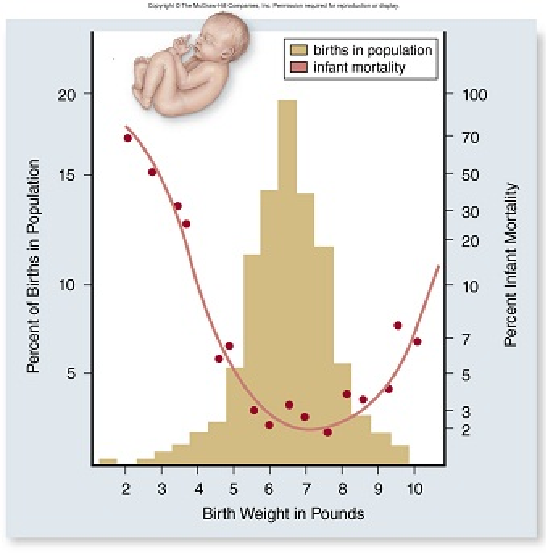Much of the thought that occurs in the thinking portion of the brain occurs in the gray outer layer called the ________.
Fill in the blank(s) with the appropriate word(s).
cerebral cortex
Much of the thought that occurs in the thinking portion of the brain occurs in the gray outer layer called the cerebral cortex.
You might also like to view...
In the graph below, how can the change in infant mortality be explained as birth weight increases from 2 to 7 pounds?

A. A larger baby will have more developed organs and thus have greater fitness.
B. A baby closer to 7 pounds will have more developed organs and thus have lower mortality.
C. A baby closer to 2 pounds will not be able to be delivered safely and thus have lower mortality.
D. A baby closer to 7 pounds will have more developed organs and thus have higher motality.
E. A baby closer to 7 pounds will not be able to be delivered safely and thus have higher mortality.
Clarify Question
· What is the key concept addressed by the question?
· What type of thinking is required?
· What key words does the question contain and what do they mean?
Gather Content
· What do you already know about fitness? How does it relate to the question?
Consider Possibilities
· What other information is related to the question? Which information is most useful?
Choose Answer
· Given what you now know, what information and/or problem solving approach is most likely to produce the correct answer?
Reflect on Process
· Did your problem-solving process lead you to the correct answer? If not, where did the process break down or lead you astray? How can you revise your approach to produce a more desirable result?
Organ formation is indicated by
a. A. b. B. c. C. d. D. e. E.
Blood pressure is the force that drives molecules out of the glomerulus into the Bowman's capsule.
a. true b. false
The antimicrobial drugs with the broadest spectrum of activity are
A) aminoglycosides. B) chloramphenicol. C) penicillin G. D) macrolides. E) tetracyclines.